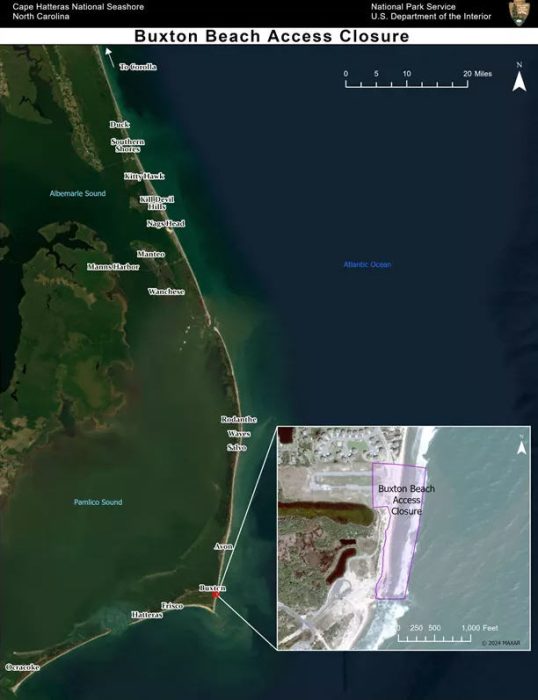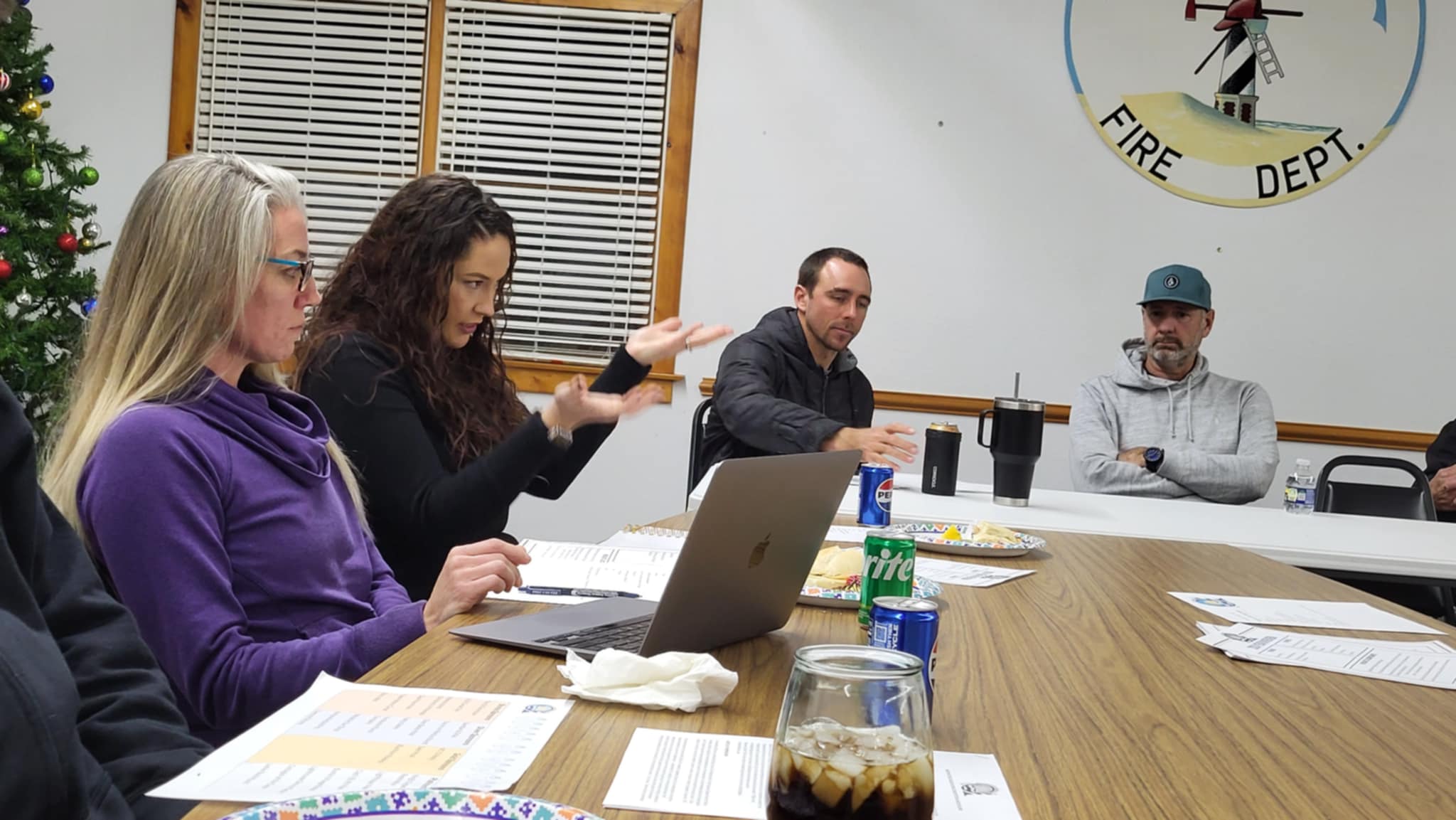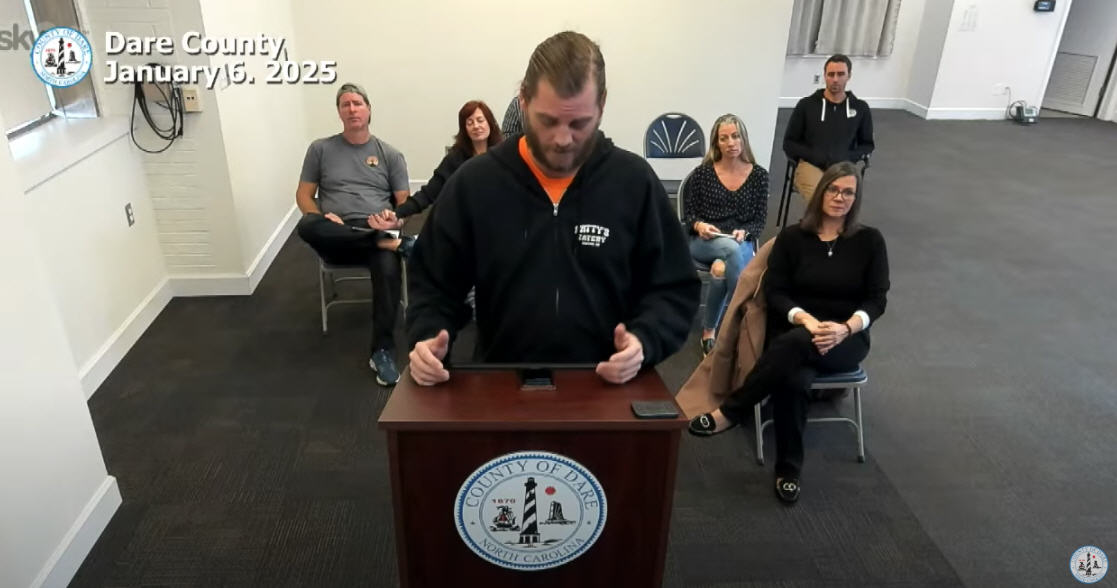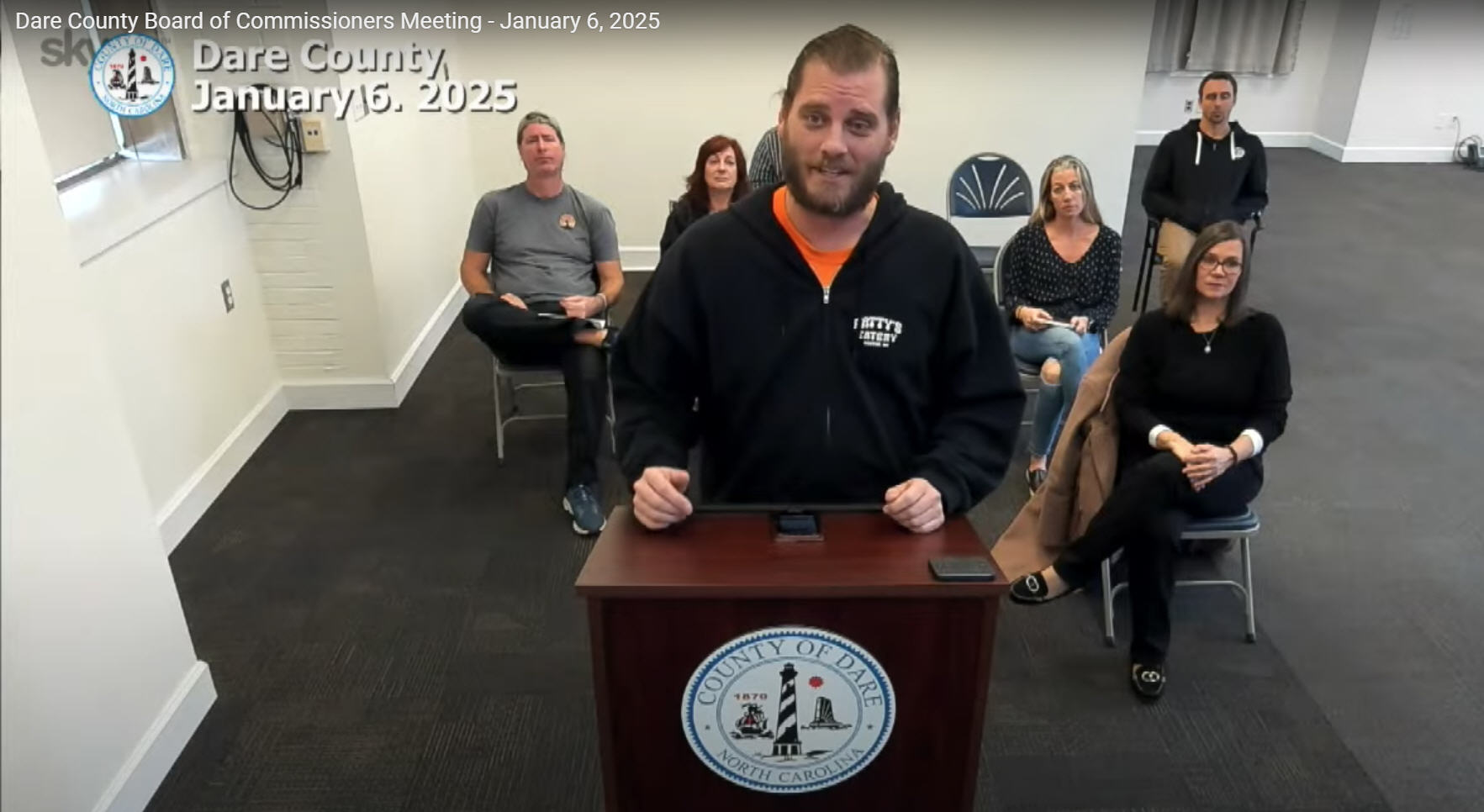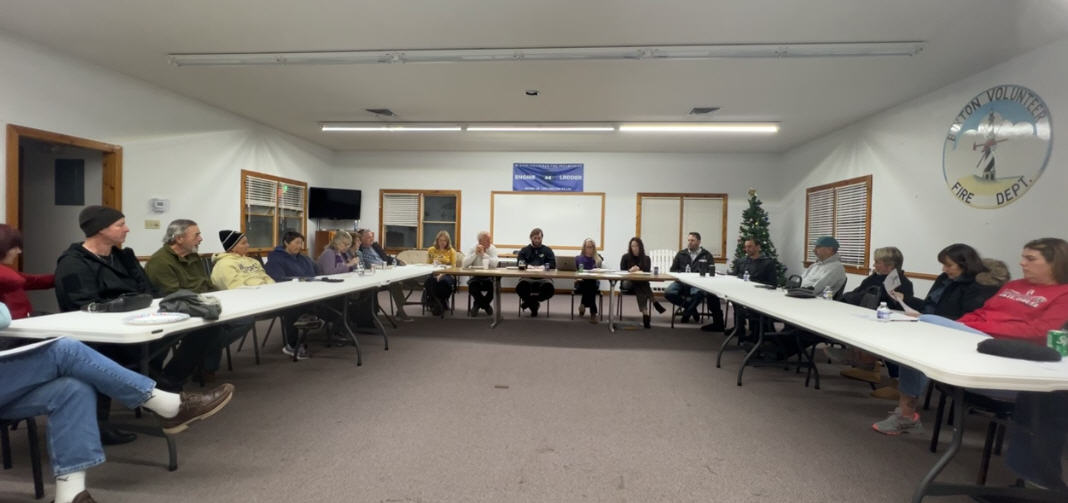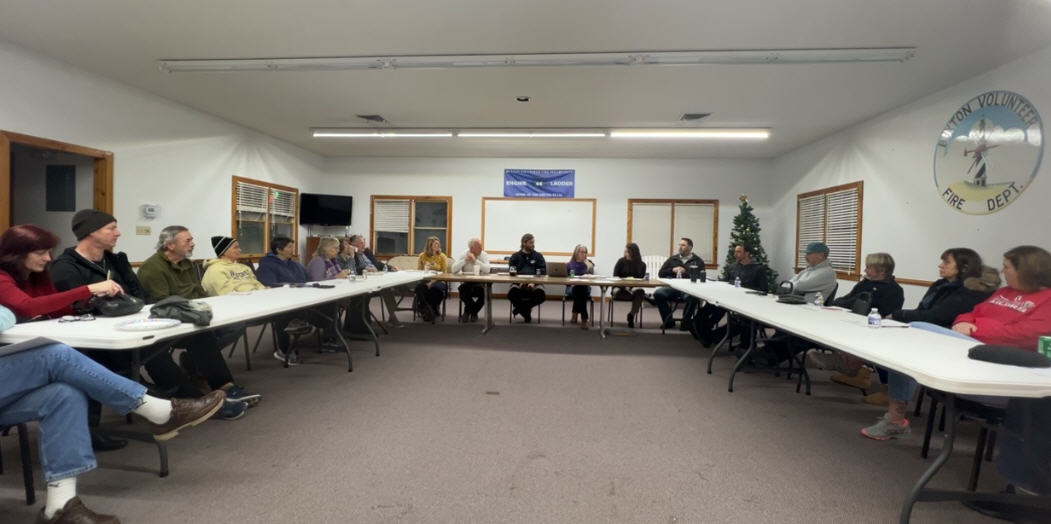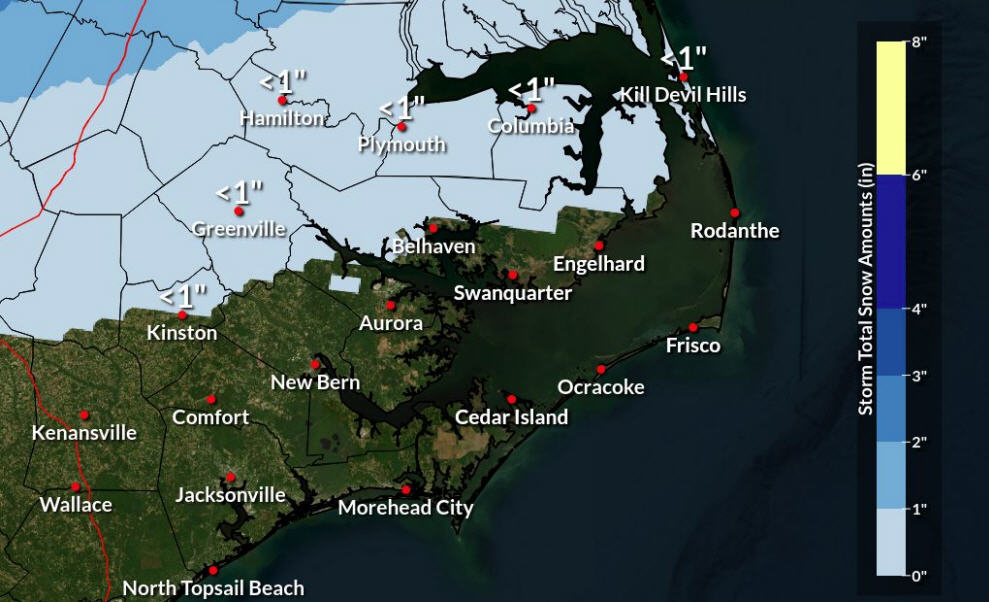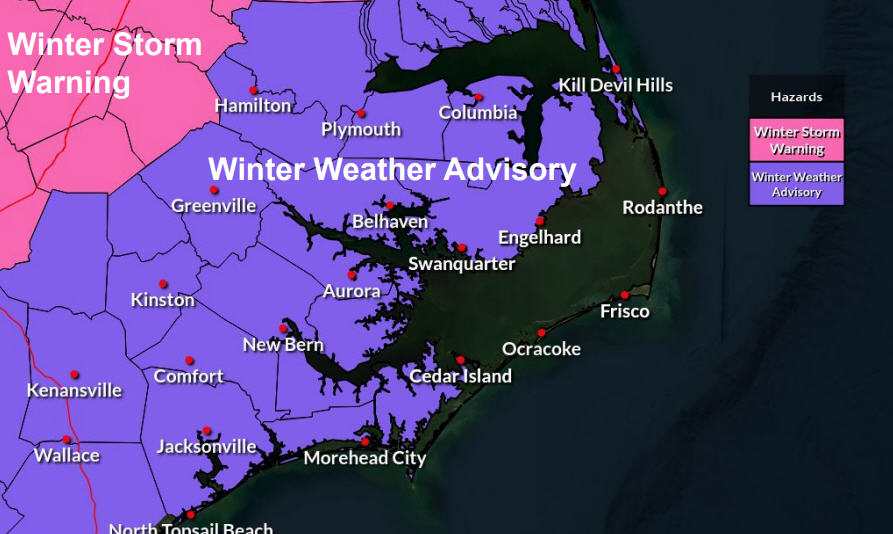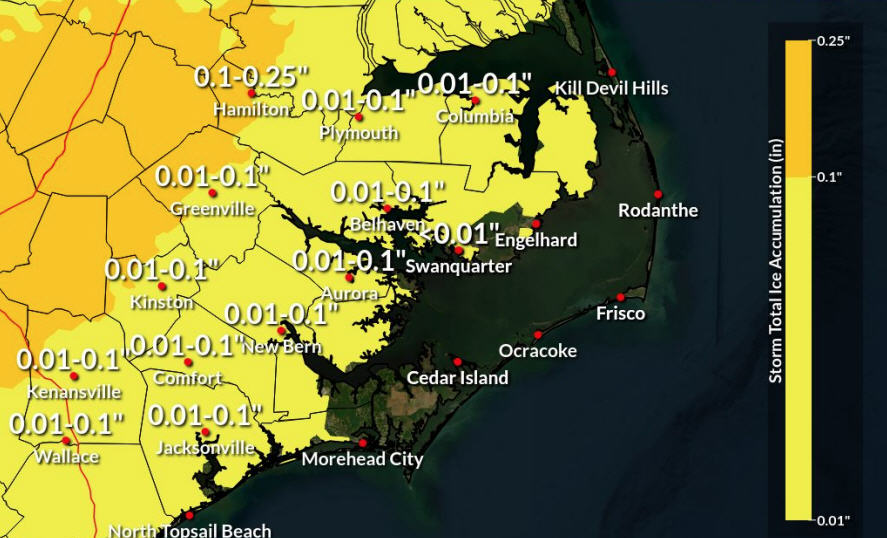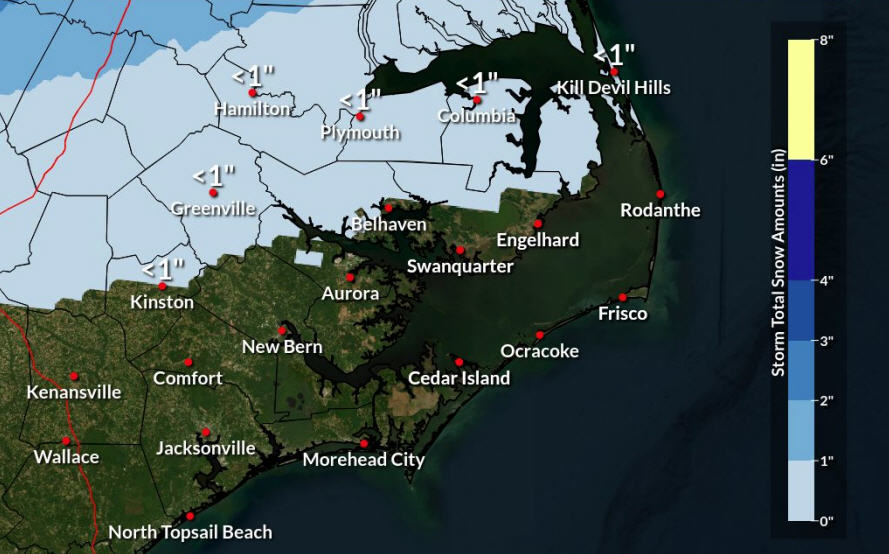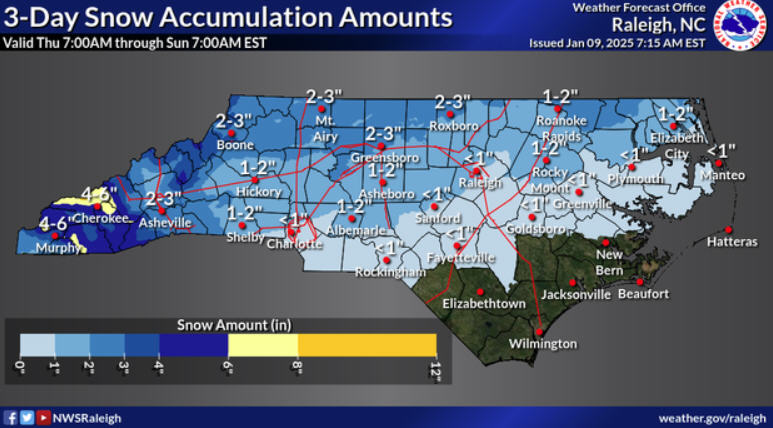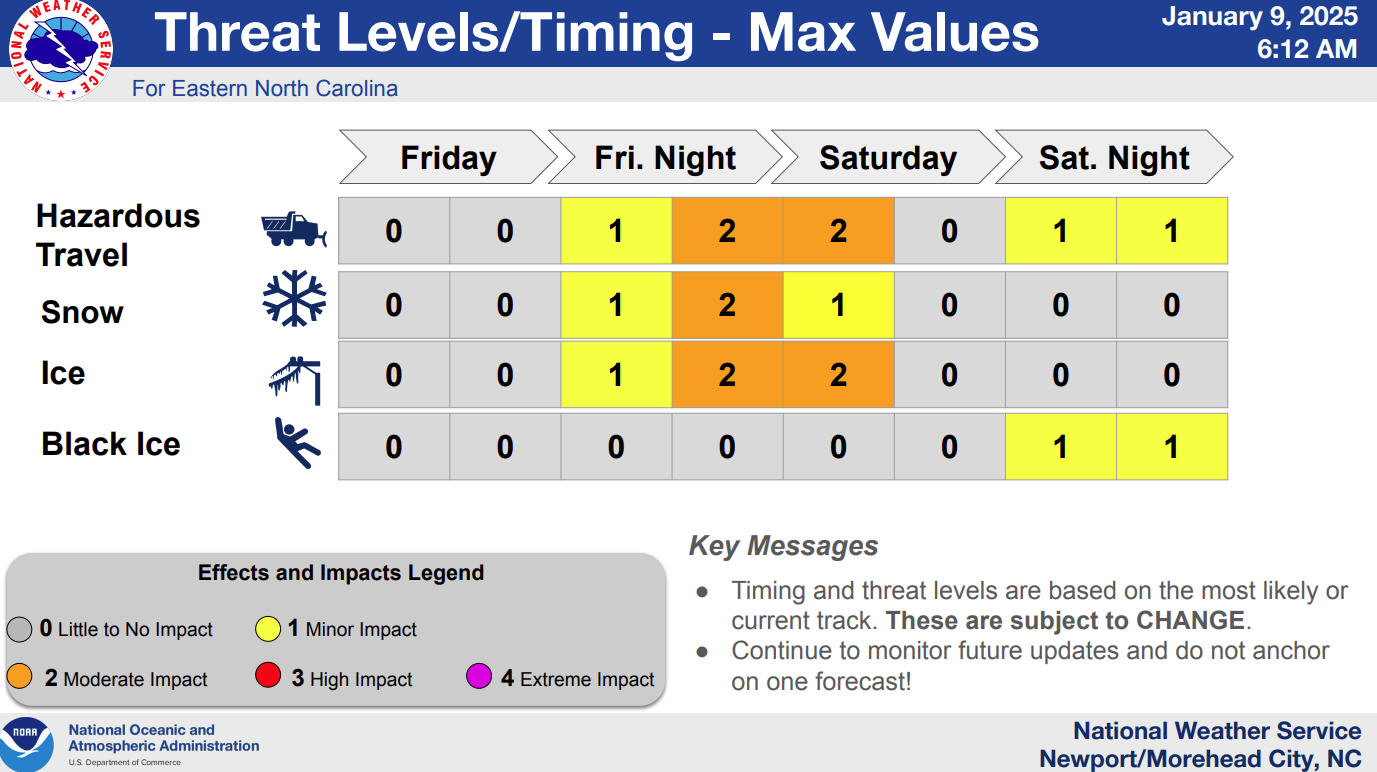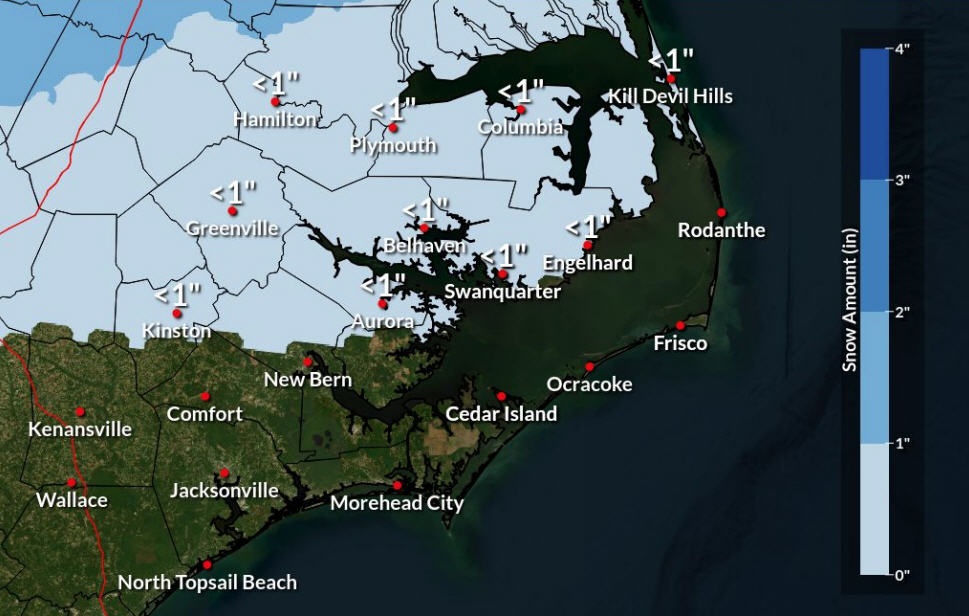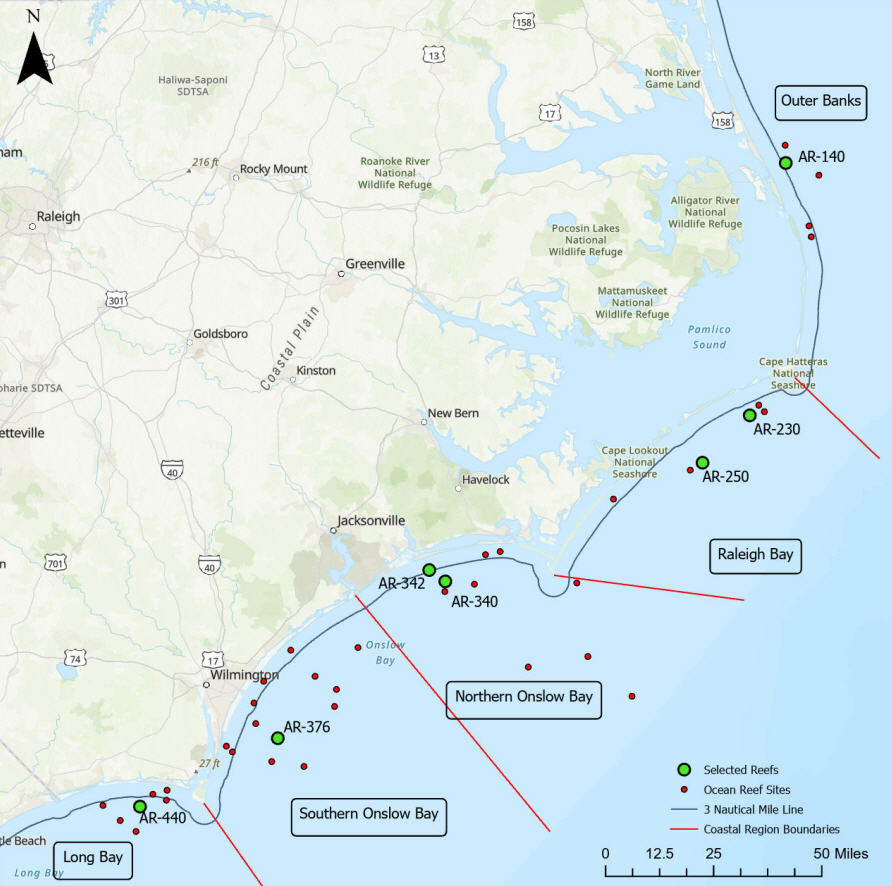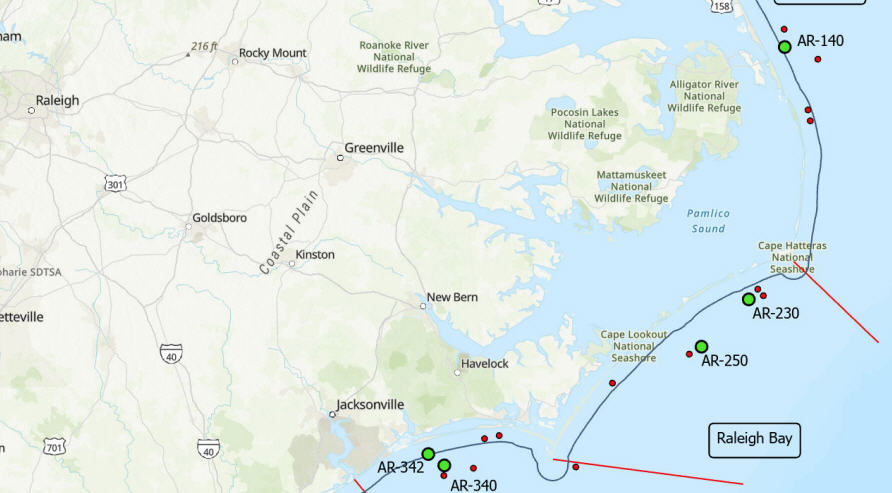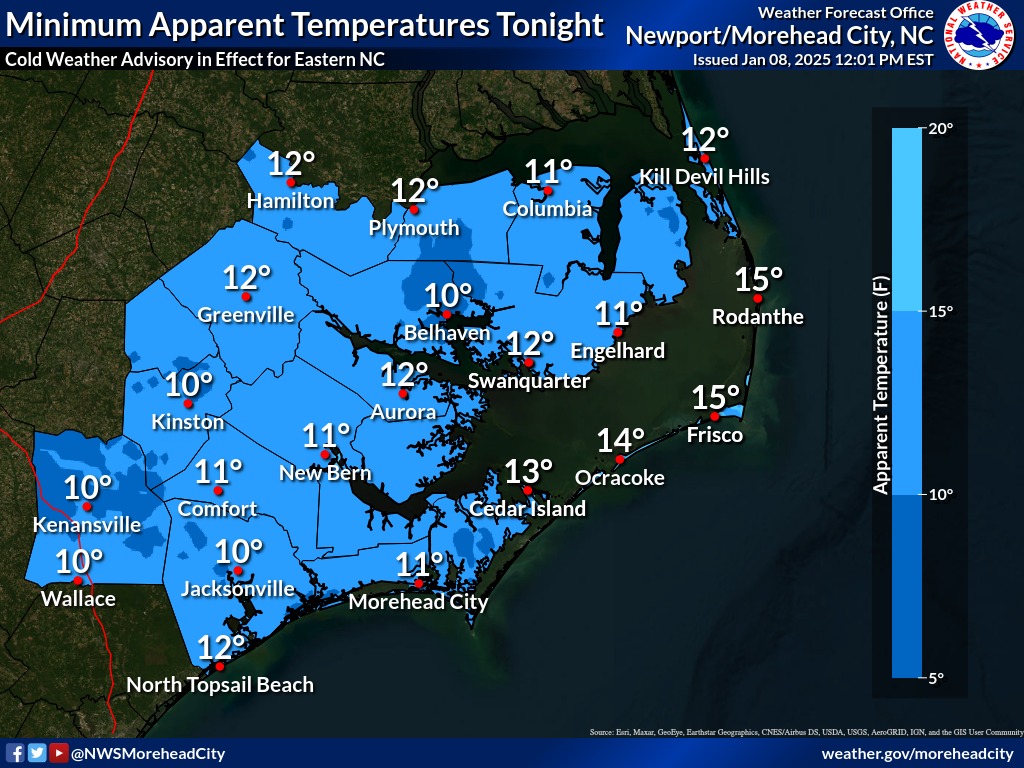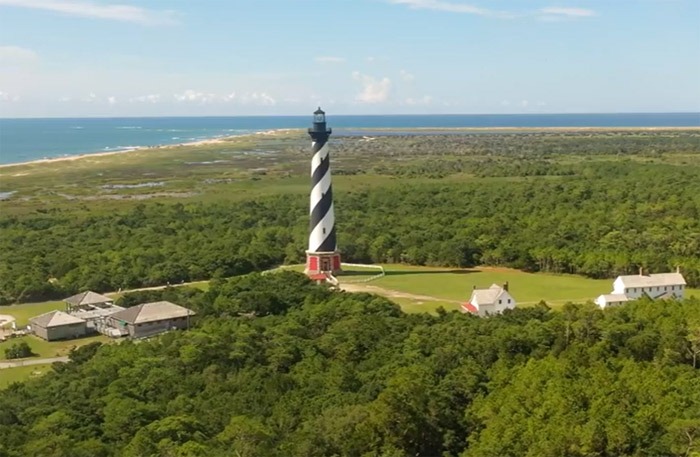Corps releases Final Summary Report of Findings at the former Buxton Naval Facility
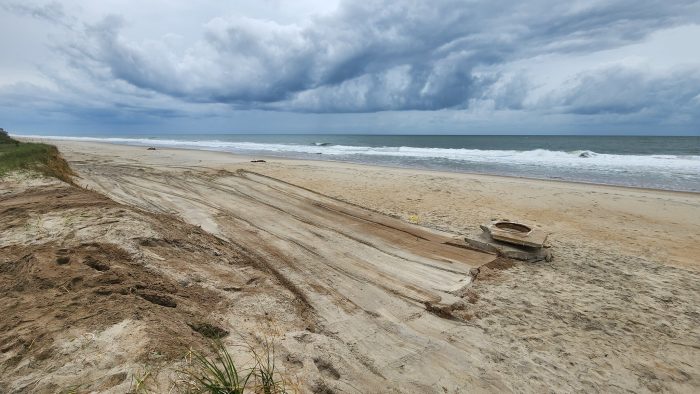
The Final Summary Report from the U.S. Army Corps of Engineers outlines the five site visits that were made by the agency from September 7, 2023, to February 15-16, 2024, but does not include the recent developments that have occurred over the past three months.
The U.S. Army Corps of Engineers (USACE) Savannah District recently released its Final Summary Report of Findings at the Buxton Naval Facility Formerly Used Defense Site.
The report details the investigations made by the USACE from September 2023 to February 2024 after significant erosion caused by offshore hurricanes revealed remnants of the former 1956-2010 military base, as well as a new issue of occasional petroleum smells in the immediate area.
The 685-page report covers the five site visits the USACE made since these issues were first reported, which occurred in September, October, November, December, and February, but it does not include any recent developments after February 15-16, such as a May pipe removal or the public meeting that was co-hosted by the USACE and the Dare County Board of Commissioners on May 14 to connect with the Outer Banks community on the ongoing issues.
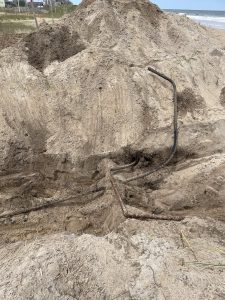
Last week, the USACE removed a pipe that was around 2-3 inches in diameter and 70-80 feet long, which was thought to be a potential source of petroleum, per observations from the National Park Service in early 2024.
“During early February and on February 14, 2024, Cape Hatteras National Seashore and the Coast Guard noticed strong petroleum odors inside and around the foundation of the Navy’s Building 19 (Terminal building),” said Michael Barber, Public Affairs Specialist for the Cape Hatteras National Seashore. “Seashore staff also noted the presence of a pipe that was emanating a petroleum odor.”
The excavation work was conducted via a $525,000 contract that was awarded to SLSCO, LTD, and a second underground pipe was also discovered during the process
“There was a second pipe, but only the original pipe was removed,” stated the USACE in an email to the Island Free Press on May 17. “The team searched beyond the original pipe to ensure it hadn’t broken and possibly continued beyond that location, but it was determined it did not continue. However, they did find a pipe perpendicular to the original pipe, and they chased it to ensure it was not connected to the original pipe being removed. The perpendicular pipe did not appear to connect to the pipe being removed.”
Soil samples were tested following the removal of the pipe, and there is not a timeline for when results will be available. “Field work at the site, for this investigative work, has been completed,” stated the USACE. “We’re uncertain at this time when the results from the soil samples will be available. The results are needed to determine the next steps.”
While the USACE has demonstrably heightened efforts in the past several weeks to address potential petroleum contamination, the recently released Summary Report outlines the prior investigative work that took place from September through February to identify the source of the environmental issues; namely, the petroleum contamination.
The full report can be viewed here.
The Summary Report outlines the site’s history, organic material investigations, and detailed results from laboratory testing, and a few notable excerpts of the report are listed below.
Site History
According to the report, the USACE completed a Findings and Determination of Eligibility of Department of Defense Responsibility on February 13, 1985, and found that the removal of “two buildings, foundations, utilities, roads, parking areas, and appurtenant structures” was warranted.

The two buildings included the oceanfront and recently-exposed Terminal Building and the former Driftwood Club.
An Environmental Assessment and Finding of No Significant Impact for Defense Environmental Restoration Program from July 1985 further explains the work involved:
“The project involves demolition of 2 concrete buildings, foundations and attendant fences, and pavements,” states the 1985 document. “Conventional demolition techniques will be used in removal of all structures, with the contract requiring complete removal and disposal of all debris.”
The USACE Wilmington District certified that the demolition of these concrete structures – and their foundations – was complete as of February 21, 1986.
Also according to the Summary Report, the USACE conducted extensive efforts to remove additional and unnecessary aspects of the military site in the decades that followed. They removed seven above-ground storage tanks (ASTs) in 1989 and three additional ASTs in 1991. Meanwhile, the U.S. Coast Guard removed 27 heating oil tanks associated with housing units in 1991 and completed a Site Characterization Report in 1992, which recommended remediation of additional petroleum contamination.
The USACE removed the Oil Change Ramp, a fuel distribution pipeline connecting a storage tank near Building 9 to Building 41 east of the entrance road, and 2,700 cubic yards of petroleum-contaminated soil beginning in 2004. As part of this action, the USACE removed all the contaminated soil on the beach where the former [Terminal] building 19 was located.
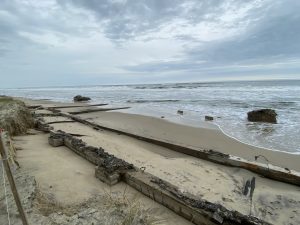
The USACE stated in the report that they removed approximately 90% of the contaminated soil on the land west of the dunes, but the agency was “prevented from removing all the contaminated soil in this area because of access limitations posed by Old Lighthouse Road and critical infrastructure.”
Groundwater monitoring began in 2005, and the results showed a “downward trend in concentrations of petroleum related contaminants.” The USACE conducted groundwater injections with a product called Petrofix® – a fluid designed to treat petroleum fuel spills in soil and groundwater – in June and July 2020, and also in August 2021, to speed up this process.
But it appears petroleum resurfaced following these actions, as C9-C22 aromatics (or petroleum hydrocarbons) were detected above the regulatory action level in two temporary wells near the former [Terminal] Building 19 in September 2023.
It should also be noted that, per the USACE Buxton webpage, in 1991, the USACE created Project 02 to demolish and remove a communications tower, (which is the square base that is visible on the shoreline today.) Per the USACE, the U.S. Coast Guard and National Park Service informed the agency that the tower was still being used. “Accordingly, no demolition or removal activities occurred and the USACE closed out the project on 30 September 1991.”
Results of the five site visits
The first site visit by the USACE took place on September 7, 2023, and coincided with a routine and planned groundwater sampling event.
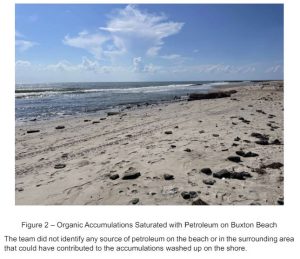
The team verified that the beach had sporadic accumulations of what appeared to be masses of organic material and sand that were “saturated with an unknown substance,” but did not identify any source of petroleum on the beach or in the surrounding area that could have contributed to the accumulations washed up on the shore.
The next visit occurred on October 12, 2023, where the USACE team collected ambient air readings, air readings at various exposed pipes protruding from the dunes, dug four test pits, and collected two sub-surface soil samples.
These results were mixed, and had some hurdles. For example, the team did not take readings at test pits three or four because a steady rain started, and the instrument could not operate in rainy conditions. In addition, no soil samples were collected from test pits 2 and 3 (TP-2 and TP-3) as no visual or olfactory indication of petroleum contamination was present.
The November 2023 visit was to investigate the potential presence of a 10,000-gallon underground storage tank (UST) behind the former Building 7, and to inspect the beach. Several magnetic objects (a manhole lid, concrete pad with rebar, and metal saddle straps), were discovered, but no UST was found, and no petroleum odor, petroleum-impacted soil, or petroleum-saturated organic matter was observed on this specific November 2 visit.
The December 2023 testing was more intense and was focused on finding a source of petroleum. In this week of testing that occurred around December 18, the team mobilized with a Geoprobe® direct-push track-mounted drill rig capable of operating on the beach. The drill crew placed nine boreholes to depths ranging from 15-20 ft. and the depths were selected to identify a potential peat or organic layer below the regular groundwater table. Per the report, the crew found minimal or no evidence of peat, organic soils, or petroleum products.
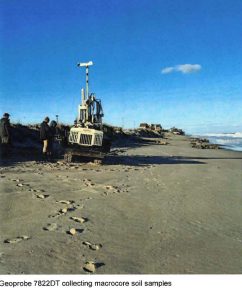
The USACE conducted a final field visit on February 15 and 16, 2024. A team was sent to the site after a conference call on February 14, during which non-USACE personnel indicated that the odor of petroleum was so strong that “persons on the site could not be present on the beach for extended periods of time.” The USACE sent a geologist and an environmental engineer to assess conditions at Buxton Beach.
During this visit, the team arrived on the site around low tide on February 15, and “did not observe any petroleum odors, sheens, or stained soils during the site inspection.” The following day, the team returned 1-2 hours before high tide, and while peat balls were observed, they did not appear to have petroleum odors.
“The interpretation is that the presence of organic material and odor is potentially heavily dependent on conditions at sea at the time,” reads the summary of the February 2024 visit. “The conclusion was that a predictive approach needs to be taken to try to identify if conditions might be favorable for the organic material to wash up and for odors to be present.”
The individual reports for both February visits do not list the wind direction or speed, but note that weather conditions were 50-55 degrees and partly sunny.
Historical weather readings note that winds were generally from a southerly direction and around 10-15 mph during both February visits. This is worth mentioning, because as numerous beachgoers and the USACE’s final report note, the appearance of petroleum smells and sheens is highly dependent on weather conditions and tends to be most prevalent when there is a strong northerly wind, and erosion in the immediate area is accelerated.
The generalized conclusions of the report, per Section 3.2 (page 12) are as follows.
“The conditions at Buxton Beach are transient. The organic materials and the odor are not present on the beach constantly. This indicates that the source of the material and the odor is either not present in the project area or is in concentrations not identifiable. Comparing the highest concentration of DRO found on site in 1992 of 410 mg/kg to the concentration of DRO found in the organic material that washed onto shore in September 2023 is also an indicator that Navy activities may not be the source of contamination.
“The groundwater monitoring data repeatedly shows a steady decrease in concentrations of contamination. The presence of free product would result in laboratory results with petroleum constituents such as benzene, toluene, ethylene, and xylene. The lack of these 13 analytes in the routine groundwater sampling precludes the possibility of an active source of petroleum in the subsurface.
“The USACE has been remediating the groundwater for over 15 years with no incidents similar to what happened in early September 2023. Noteworthy is that a significant beach nourishment project in the area, as shown on Figure 1, was undertaken in June and July 2022. The possibility that this may have exposed offshore contamination has yet to be adequately investigated.”
“Data collected by the Coast Guard, the Seashore, and the Army Corps of Engineers suggest a noteworthy potential that the odors, occasional sheens, and presence of petroleum-contaminated sediments represent remnant contamination from the military’s use of the site between 1956 and 2010,” stated Barber in an email to the Island Free Press on May 20. “Additionally, the Seashore’s confirmation of petroleum from the inside of a suspected fuel pipe within the bounds of the Formerly Used Defense Site further suggests that not all contaminated materials were removed from the site during prior remediation activities.”

The Summary Report does not cover new initiatives after February 2024, or what comes next when it comes to future remediation efforts at this 500-yard section of Buxton shoreline, especially considering the substantial increase in community attention and involvement.
At the May 14 meeting, Commander Col. Ron Sturgeon of the Corps Savannah District touched on the future of the Buxton Beach remediation efforts, and what would happen next, after last week’s pipe removal.
“Where do we go from here? I have a third-party independent review team coming into the area… and they’re coming in to look at all remediation efforts that have occurred since the 1980s,” said Col. Sturgeon at the meeting, referring to the ongoing work that is being conducted by the Environmental and Munitions Center of Expertise, or Huntsville, Alabama. “They are currently in their investigation phase, and that report will come back, and it will really clue us in on the way ahead.
“The bottom line is that we know additional sampling will need to occur within the area, and if those samplings come back as contaminated, it’s going back to our managers at headquarters to request additional funding to remediate that part of the beach.”
For more information on Buxton Beach, and how to get involved
- The Buxton Civic Association, which was formed as a community initiative to respond to the Buxton Beach issue, meets the first Thursday of every month at the old Buxton Volunteer Fire Department building beside Burrus Field. The next meeting is June 6 at 6:00 p.m. and the public is welcome and encouraged to attend.
- Developing info from the Buxton Civic Association (BCA) can be accessed via the organization’s new website at Buxtoncivic.com or through the BCA’s official Facebook page.
- The public can also join the ongoing email and letter-writing campaign, which was launched in mid-March by Buxton community members.
- Visitors who encounter a fuel smell or fuel sheens while visiting the Buxton shoreline near Old Lighthouse Road should call the National Response Center at 1-800-424-8802 to report the encounter. Include the date, time, location, and basic details of what was seen or smelled, and do not call if you have not experienced the issue first-hand, or have not been physically affected.
- Remember that while the environmental issues at Buxton Beach are considered to be a public safety and environmental hazard, just three-tenths of a mile of the shoreline is closed, out of 75 miles of National Seashore. In short, the public can still visit and enjoy Buxton, and Hatteras Island in general. The primary concern is that this issue needs to be addressed now, before it potentially becomes a larger problem.
